In this series of articles, I will explain what architectural photography is, and provide you with lots of information which will help you if you are considering embarking on a career as an architectural photographer. I will describe the business side of architectural photography, the equipment I use, and how I take and process my images.
In the first article I will write about
- Me, and
- What an architectural photographer is
That will do for starters
In future posts I will cover the following areas.
The business side of architectural photography
- Marketing
- Websites, SEO and social media
- Clients
- Commercial matters
- Selling – convincing clients that I am the man to take photographs for them – yes – we must sell ourselves!
- Developing the business
Planning a shoot.
There is a lot to plan, and the more you plan the better the outcome. I have learnt from my years as a construction project manager – there is much more to this than agreeing a fee and going out taking photographs! Timing is so critical when photographing newly constructed buildings.
Equipment for architectural photography
The equipment I use – this covers obviously photography equipment, but also non- photography equipment that I use. And my red hat.
My image capture process, and how I achieve my style of images.
Composition, technical aspects. My style – the work I have done is the work I show to clients.
Processing of my images in Lightroom and Photoshop.
There are two aspects to this, well more than two but two key things I want to point out here – technical correctness and my style.
Other business opportunities
Summary
In this series of articles I will share my experiences and learning, which will give you a detailed insight into working as an architectural photographer.
I hope that once you have read all these articles you will be much better informed as to if this might be a career in photography worth pursuing.
Me. Rick McEvoy – Architectural Photographer.
A little bit about me, my experience in building construction, and why I love photographing buildings. Not just lovely ones like the Pisa Baptistery.
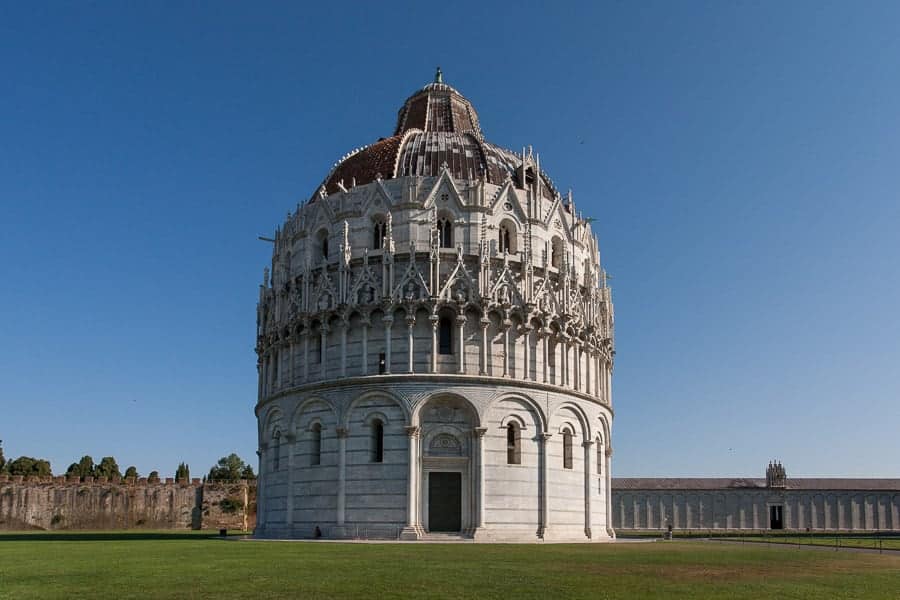
I am a Chartered Builder (MCIOB), and am also professionally qualified in photography (LBIPP), and I specialise in architectural photography and all aspects of photographing the built environment. I will define architectural photography shortly, but I extend the term architectural photography to include the photographing of buildings in all stages of their lifecycle, from
- Concept and inception – locational photographs for visualisations
- Planning and development – locational photographs showing the impact on the environment and surrounding areas.
- Construction phase – taking photographs on live construction sites,
- Practical completion – when I take most of my architectural photography images. Just when the building has been completed, during the process of handover to the client.
- Practical completion can be of the construction of a brand-new building, or the refurbishment of part or all of an existing building.
- I also photograph buildings for clients long after completion of construction works.
Architects and construction
You will notice that I mention architects and construction a lot. To make money from architectural photography you have to find people who are willing to pay money for pictures of buildings. You will not get a regular income from photographing nice buildings on spec.
This is hardly a pretty building, but a very important one to the people paying for the extensive refurbishment. And even more so for the users of the building. The garden to the front is very important – I needed one photograph to tell the complete story of this building, and this is it.
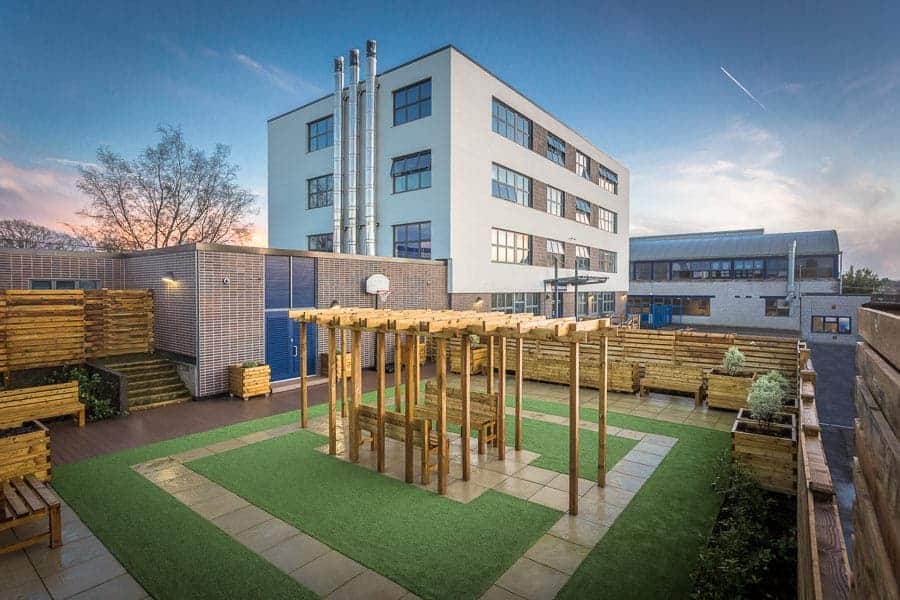
If we restrict ourselves to the construction process itself, the parties involved include;
- Architects
- Structural engineers
- Mechanical and electrical engineers
- Other specialist designers and engineers
- Construction companies
- Sub-contractors
- Product manufacturers
- Material suppliers
- Developers
- Finance companies
- Marketing companies
- Building owners
- Building occupiers
There are two parties from the list above who provide the vast majority of my work
- Architects
- Product manufacturers
I will explain more about my views on the various parties to the construction process in my next article about the business of architectural photography.
You will have noticed by now that I talk a lot about construction and architects.
This is for a reason, and will be a recurring theme throughout this series of articles. You will probably get bored of reading architects and construction. But they are very important believe me.
Architectural photography is not easy. I love doing it. This is very important.
Seriously I enjoy it, and it means a lot to me. So much so that I still get nervous when I issue my images to a client
- Will they like the images?
- Have I fully satisfied the clients brief?
- Did I miss something?
- Do my photographs look awful?
All these thoughts and worries go through my mind every time, really, they do. They did yesterday. But the client loved the images.
And one thing that I have learnt is this – once a client has downloaded the images (and I know when they have using the wonderful We Transfer as I get an email telling me), what happens next is this.
Nothing. I hear nothing.
Sometimes I have to chase the client for feedback. I only hear back quickly if there is a problem. Remember this. But knowing this does not help me. I still worry.
One very important thing to remember.
There will always be a demand for photographs of buildings, as there will always be buildings.
Like this house in Poundbury. The client wanted a very bright look.
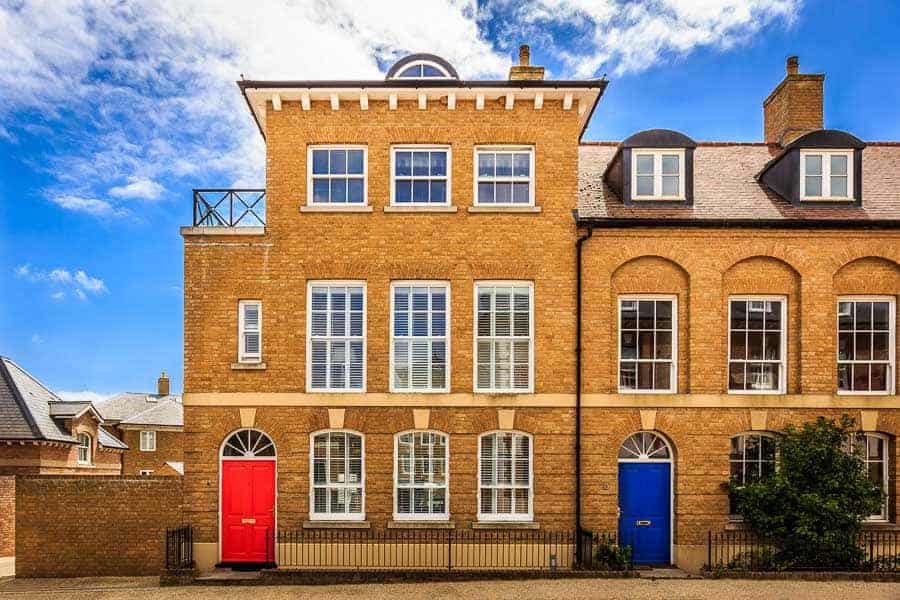
It is not a bad career choice to take in photography. Buildings are not trends or fads – there will always be a demand for them. Sure, the demand will vary with the state of the economy, but there will always be buildings.
Do you like photographing buildings?
Another point I would like to raise here is enjoyment. If you are reading this you might be considering ways of making a living with your photography. This suggest you might already be doing something else for a living which you don’t want to do.
Do you genuinely have an interest in buildings?
If you are not really that interested in buildings you might as well stop reading here – a career in architectural photography is probably not for you (and to be honest neither will this article be either).
I am a firm believer that you do something better if you enjoy doing it. I know that I get a buzz out of being out on sites photographing buildings, and getting back, downloading the images and seeing what I have captured.
If you like taking photographs of buildings, a career as an architectural photographer might be just the thing to enable you to make money doing something you enjoy.
What is architectural photography?
Time to get into the photography side of this – sorry it has been all about other stuff but now let’s look at what architectural photography actually is.
That is an interesting point and wholly relevant so I will expand on this here.
What proportion of my time is spent behind the camera taking pictures?
You might be shocked by the answer. It is probably 25% of a single architectural photography commission. And I would guess around 10% of my overall time.
This is the reality of being an architectural photographer.
Now it is time to sort out exactly what architectural photography is, and in turn what is an architectural photographer.
A couple of definitions will help here. I like definitions. Someone has gone to the trouble to define something – saves me having to do it.
According to Wikipedia, architectural photography is defined as
“Architectural photography is the photographing of buildings and similar structures that are both aesthetically pleasing and accurate representations of their subjects. Architectural photographers are usually skilled in the use of specialised techniques and equipment.
I like this definition. To a point.
Let’s try another – this is not the complete answer for me. I will tell you why in a bit.
Side note here – when I search the term architectural photographer in Google I am all over the search results – this when I remind my ego that I need to log out of Google before I do a search!
Here is another definition, from Designing Buildings Wiki
“Architectural photographers take photographs of buildings and other built structures in a professional capacity. Their photographs are often intended for commercial purposes, for the developer to publish online or in brochures, or for the portfolios of the project team. As potential buyers and clients are often drawn to properties by an image, it is very important that attractive photographs are made available, and the right photographs can be very valuable to those who commission them.
Architectural photographers may be trained photographers who have specialised in architecture through their career, or they may be have a background training as an architect or related profession.”
Lastly, when you put architectural photography into the Oxford Dictionaries website you get this
“Relating to the art or practice of designing and constructing buildings.”
Designing and constructing buildings. Those are two key words.
Architectural photography is not just about photographing aesthetically pleasing buildings – it is the photographing of buildings, no matter how aesthetically pleasing they are or are not.
These are the important factors in building design for me
- How a building works for its users
- The design of the building
- The construction of the building
- The quality of the design and construction
- The architectural intent
- The impact of the building on its environment
- How light interacts with the structure
- The internal spaces
- The relationship of spaces to each other
These are the important aspects of buildings. And are the important aspects of architectural photography.
Most of my architectural photography work is for architects. An architect is defined as
“A person who designs buildings and in many cases also supervises their construction” according to the Oxford Dictionaries website
And according to Wikipedia
“An architect is someone who plans, designs, and reviews the construction of buildings. To practice architecture means to provide services in connection with the design of buildings and the space within the site surrounding the buildings, that have as their principal purpose human occupancy or use.[1] Etymologically, architect derives from the Latin architectus, which derives from the Greek (arkhi-, chief + tekton, builder), i.e., chief builder.[2]”
I think that has answered the question of what an architect is.
Allow me to summarise in my own words from my own experiences working in construction what an architect is.
An architect
- Develops a design in accordance with the requirements of the client.
- This could be a new building, extension to an existing building, refurbishment/ re-modelling of an existing building or combination of these works,
- Obtains statutory consents for works (Planning Permission/ Building Regulation approval in the UK)
- Procures construction works on behalf of the client
- Manages the overall construction process
- Supervises the works
- Ensures compliance with the specification and quality standards
- Signs off the work on completion
There are numerous other ways of procuring construction work, but this is the UK convention with which I find myself involved usually. These principles of construction are similar outside of the UK, but it is always good to ascertain the design and contractual relationships when considering an architectural photography commission.
Sorry go into such detail in a photography article, but it is important to explain the role of the architect, who is often my client.
Architects are very important to me.
I have defined what an architect is, and what architectural photography is. I promise I will not go back into such detail, but needed to get these definitions out of the way.
As I said earlier, a career in architectural photography is not turning up, photographing some nice buildings and selling them for a pocket full of cash. And if I am wrong with this please let me know right away!
Summary, and a few clarifications on this introduction to architectural photography.
Architectural photography is not real estate photography, or as we call it in the UK estate agent photography. It is the photographing of buildings, but for a different client and for a different purpose. Take this picture of a new building at the Royal Bournemouth and Christchurch Hospital. Made by the bird!
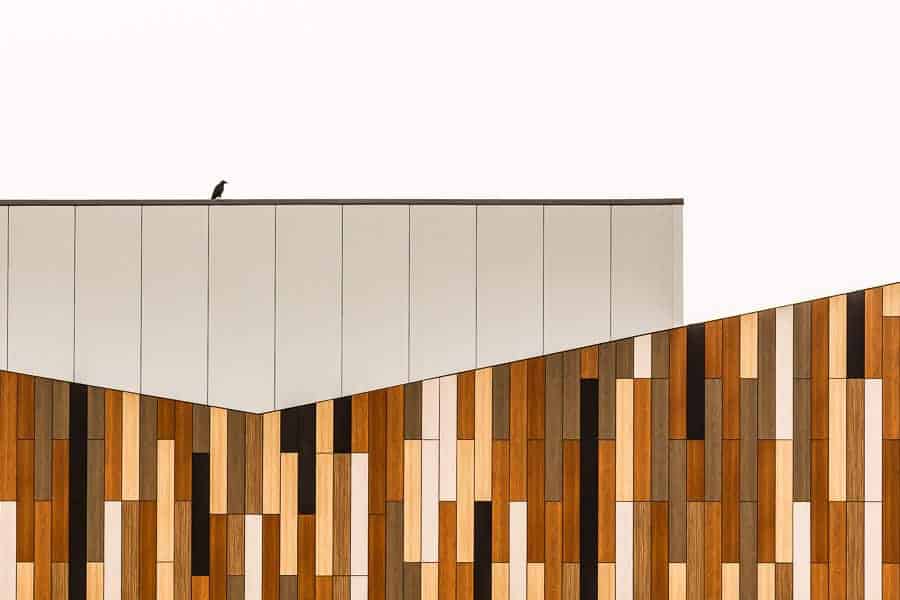
There is an important aside to architectural photography, which is the photographing of specific products as they are being installed in buildings. I call this construction product photography, and I will write about this in a separate post.
That was my introduction to architectural photography, and what it means to be an architectural photographer.
In the next article I will write solely about the business of architectural photography. Boring but important. I use that phrase a lot. Very important.
I hope you enjoyed reading this first article in a series of articles which will I hope help budding architectural photographers take the first steps to embarking on what is a very challenging but equally rewarding career in photography.
Rick McEvoy Photography

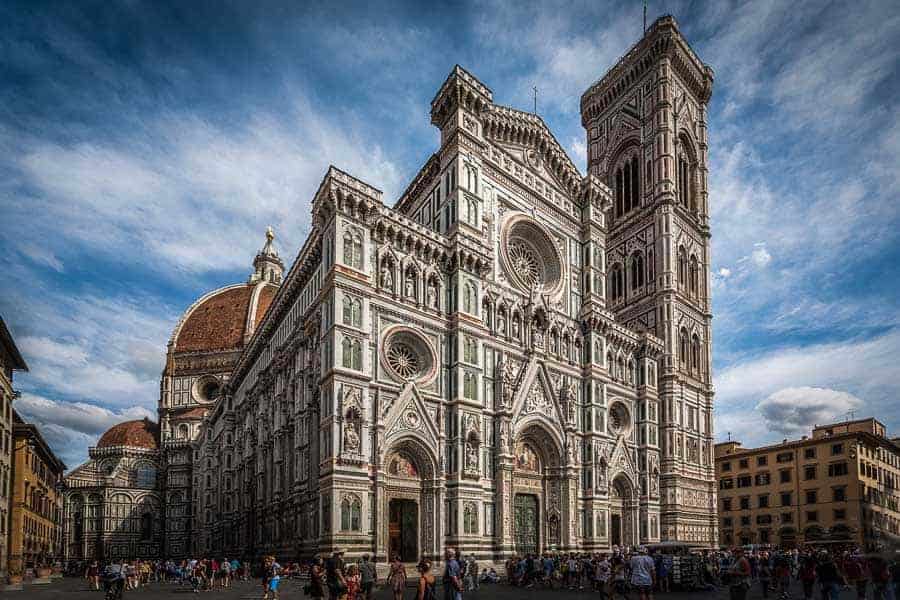
Thank you Rick for the detailed article. I’m looking forward to the series. I hope you cover image licensing and how to derive at an estimate for an architect firm for example.
Alfredo
Thank you very much for your comments. I touch on licensing and pricing in the article being published today, but will conclude with a wash up post answering all the questions that I receive in more detail.
Thank you again and warm regards from England.
Rick
I like that you mentioned that photographers can take architectural photos professionally, for the commercial developer. I have been considering becoming a photographer in the future. I can see how it would be interesting to try taking architectural photos. It would probably be really helpful for builders who want to display their work.
Hi Ryan
THank you very much for your comment. Builders are just one of the many potential customers for commercial architectural photography.
Thanks again with warm regards from Old England to New England!
Rick
Very helpful and timely cheers
Hi Sam
Thank you very much for your comment.
Regards
Rick
hiiiiii bro! hats off for the hospital image ….profound one, i’m a final year architecture student in India, I’m very much passionate in picturing architecture and space, just googled for architectural photography, got to your article. very much impressed by your experience …..very happy to feel uuu…..i’ve enjoyed a lot in your article. thank you …expecting more from you and I need your guidance too. smile in my face
Hi and thanks for your comments all the way from India.
With kind regards from England
Rick